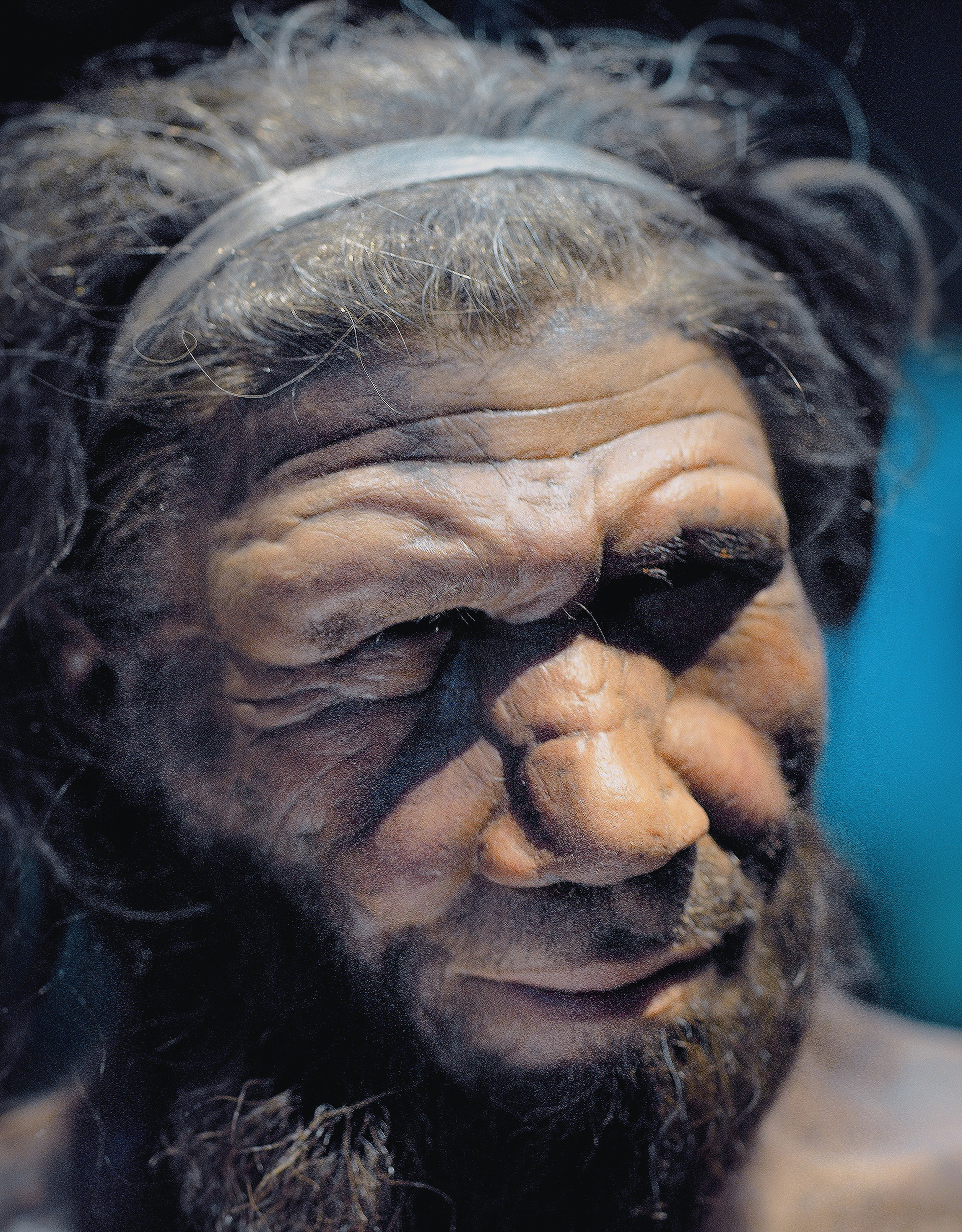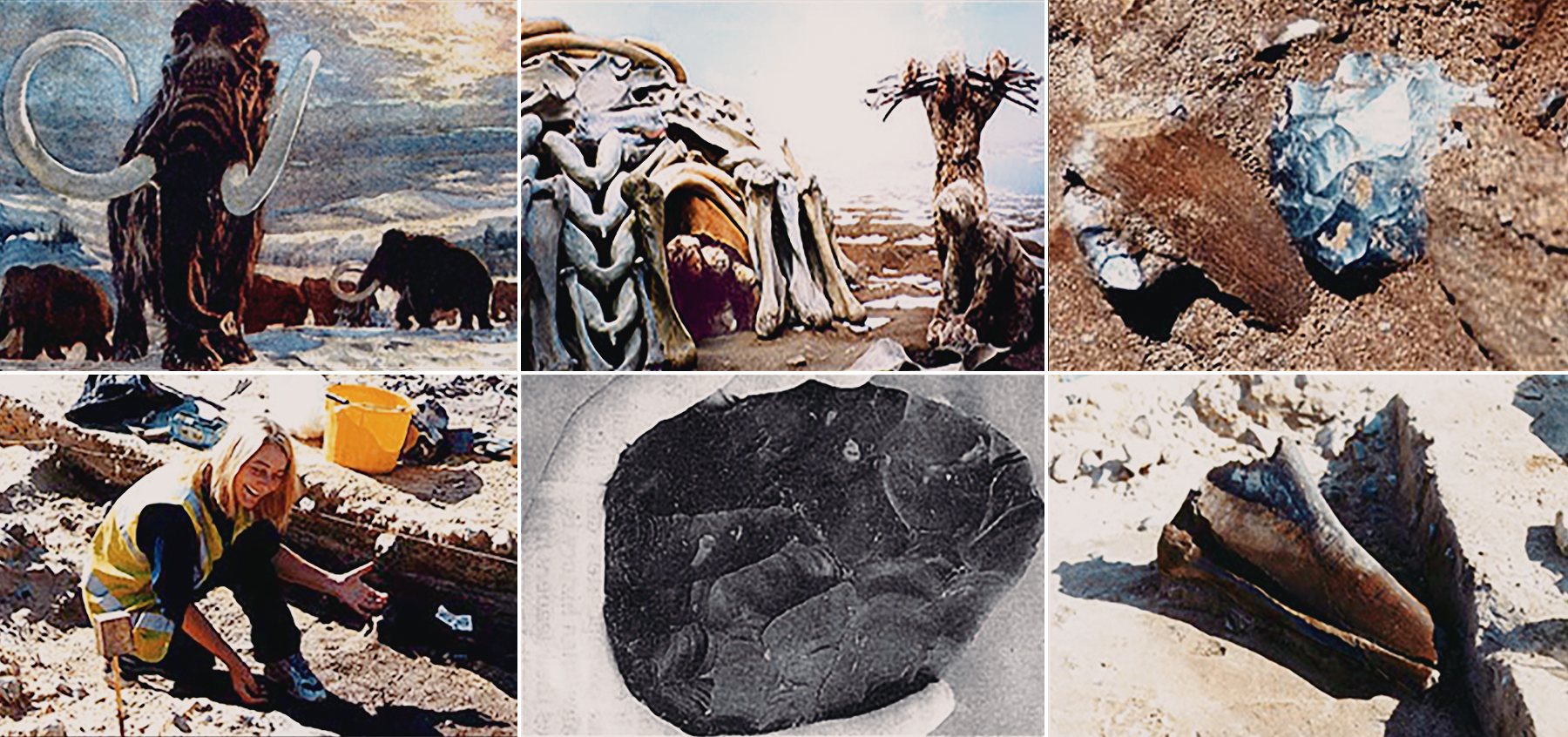



CC BY 3.0
The close proximity of the Neanderthal tools and the animal remains - one hand-axe is actually inside a mammoth skull still attached to a tusk - suggests that the site was a hunting hide where the hominids ambushed their prey, or a scavenging ground where the kills of predators, such as sabre-toothed cats and bears, were butchered and eaten. Either way, the discoveries will help scientists to piece together new details of the Neanderthal way of life, solving puzzles about their diet and behaviour.

Natural History Museum, London
The best evidence for Neanderthal hunting comes from Germany, but the Norfolk hand-axes offer the strongest indication yet of such hunting in Britain, Mark White, a Palaeolithic archaeologist from Durham University, said: "It is valid to speculate that the Neanderthal had gone to this watering place because they knew they would find prey to kill."
Bill Boismier, of the Norfolk Archaeology Unit, who led the excavation team, said that the absence of cut marks on the bones, together with large numbers of carcass beetle fossils found, made scavenging more likely, although they did not rule out a Neanderthal kill. The excavations are the first to be supported with a grant from the Aggregate Levy Sustainability Fund, which distributes money raised by a tax on gravel quarries to environmental and historical projects in such areas.
Neanderthal Man was present in Europe and Asia from about 130,000 years ago to, about 30,000 years ago, when it was supplanted by modern man, Homo sapiens. Woolly mammoth grew to about the same size as a modern Asian elephant, standing between 8ft and l0ft high at the shoulder and weighing between four and six tonnes when fully grown.
These images were taken at a newly discovered Neanderthal (Homo neanderthalensis) site in East Anglia dating from approximately 60,000 years ago. Archaeologists continue to work there and are revealing what may be the most important Palaeolithic site in Britain since evidence of Homo heidelbergensis, dating from circa 500,000 years ago, was discovered in Boxgrove in the 1990s. This new site has so far revealed over a dozen bout-coupe style handaxes, one of which is shown in photograph number one lodged against fragments of a Woolly Mammoth's tusk. The clear association of Neanderthal handaxes with a range of Glacial animal, insect and plant species makes this site the first of its kind to be found in the U.K.

A Neanderthal trap to kill or scavenge off large mammals. It has now become clear that the remains were deposited within ponds, which would have been set against a tundra backdrop: an environment containing little tree cover and perhaps a permanent layer of permafrost. These watering holes would have provided a perfect arena for Neanderthals to trap and kill large mammals, or to scavenge off the corpses of animals left by other carnivores. Future examination of all the flint tools and animal bones may be able to clarify whether the Hominids were hunting, scavenging or both. Already some bones appear to have fractures indicative of hominids smashing them for marrow extraction, as the rich fats and nutrients contained within would have been essential for survival in a cold climate.
The site will undoubtedly greatly aid our understanding of Neanderthal behaviour. As David Miles, chief Archaeologist for English Heritage, expressed it: "We may have discovered a butchery site, or, what would be even more exciting, first evidence in Britain of a Neanderthal hunting site, which would tell us much about their social abilities". Not only may we learn about the way in which Neanderthals behaved in order to obtain food, the discovery of mammoth tusks in a concentrated area may indicate that the Neanderthals used them to construct shelters or territorial markers. Therefore the site's finds may ultimately allow us to make suggestions about the symbolic behaviour of Neanderthals and allow them to be viewed as highly intelligent sentient beings, finally removing any old views depicting them as "primitive".
→ Subscribe free to the Bradshaw Foundation YouTube Channel
→ British Isles Prehistory Archive
→ British Isles Introduction
→ Stonehenge
→ Avebury
→ Kilmartin Valley
→ The Rock Art of Northumberland
→ Rock Art on the Gower Peninsula
→ New rock art discoveries in the Peak District National Park
→ Painting the Past
→ Church Hole - Creswell Crags
→ Signalling and Performance
→ Cups and Cairns
→ Ynys Môn, North Wales
→ Bryn Celli Ddu
→ The Prehistory of the Mendip Hills
→ The Red Lady of Paviland
→ Megaliths of the British Isles
→ Stone Age Mammoth Abattoir
→ Bradshaw Foundation
→ Rock Art Network













